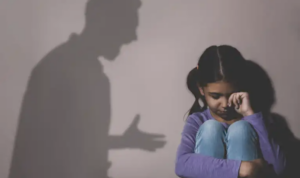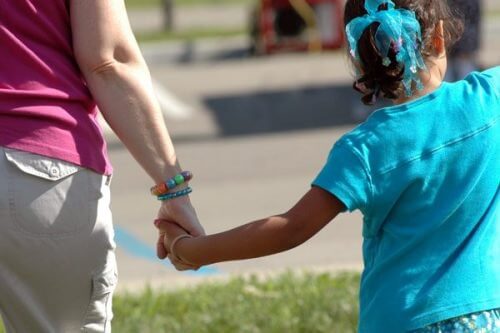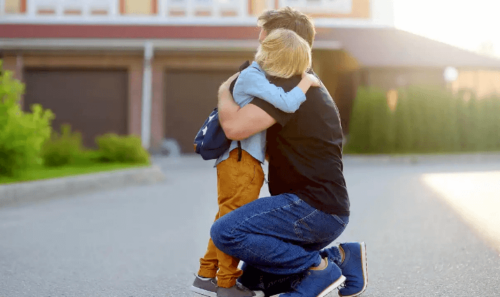How to Identify a Child Molester


Written and verified by the psychologist Bernardo Peña
Being able to identify a child molester is fundamental in this day and age. However, recognizing them can be difficult. This is because they know how to gain the trust of children and thus, get away with it. They do not have a particular physical characteristic; they can be of any ethnicity, religion or gender.
In addition, abuse can occur in any setting, especially at home. Thus, it can lead to future problems such as depression, alcohol and drug dependency, suicide attempts, panic disorders, and post-traumatic stress disorder.
In today’s article we’re going to discuss some of the characteristics that can help you recognize a child moplester. Be aware this isn’t a foolproof guide though. Consult an expert on the subject for more information.
You might like Differences between Sexual Abuse and Rape
The child molester is usually part of a child’s social network
A child molester often tries to relate to the family, to be liked by all so it’s usually charming and generous. Likewise, he takes care of them, takes them for walks, establishes a friendship, tries to gain their trust and usually commits to moving them wherever they need to be. This person focuses a lot of their attention on the child.

In this order of ideas, most abused children were victims of a family member. Also, a high percentage have been victimized by an adult they knew well and only a minority were the victims of a stranger. In general, these persons have a history of abuse, either physical or sexual. Some have psychiatric or personality disorders.
“According to estimates, a large percent of the population has experienced some type of sexual abuse during their childhood.” – Save the Children, 2021
More than 80 percent of the child molester are close to the children and about 50 percent of these aggressions happen within a family environment. Furthermore, abuse occurs in all types of families and contexts, with divorced or separated parents, with guardianship by one or more relatives, and in public administration spaces. Only in 12.5 percent of cases does the aggressor have a prior history of abuse.
In children under 13 years of age, the abuser is a close relative in most cases, while in older children it’s usually a stranger.
According to a study published by a Psychiatry Journal, the behavior of an adult aggressor towards a minor isn’t violent. They usually convince the child to begin and maintain the relationship. This is due to the fact that innocence makes the child manipulable. In addition, these people tend to withdraw socially and fear humiliation. Thus, they relate to children better as adults make them anxiety.
This pattern of sexual behavior is known as pedophilia. Moreover, a person afflicted by it can’t change the behavior on their own and most require psychiatric treatment. Not, the child molester isn’t a victim even though they often makes themselves appear that way. This kind of person is aware of what they’re doing even though they’re driven by a psychopathological condition.
How does a child molester approaches a victim?
In many cases, child molesters spend considerable time with the child and could be coaches, babysitters, and teachers, among others. They claim to love the children and be willing to die for them. Thus, they know how to use tricks, activities, and games to gain the children’s trust.
In some cases, the aggressor will ask the child to keep secrets. They tell them something bad will happen if they reveal it to an adult. The games may be sexual in content and include displays of affection, kissing, and inappropriate touching, among others. This person will try to expose the child to pornographic material, extortion, and bribery. However, they’ll combine it with affection and love which confuses and isolates their victims.
The abuse of children and teenagers through the Internet is becoming more and more common. The abuser uses it to gain a child’s trust through and obtain sexual concessions. Furthermore, they engage in cyberbullying or grooming and seek to harm the child with personal attacks with sexual connotations. Also through sexting, the sending of erotic or pornographic content via cell phones.
What’s dangerous about this medium is the ease of access from anywhere. The anonymity, invisibility, absence of risk perception, and the dissociation between the natural and virtual environment. It all results in greater disinhibition.
Taking advantage of these characteristics, the unknown (or covertly known) molester uses deception and bribery. They offer money and material goods. Thus, children without parental control over their devices could end up falling victims of these deviants.
Other characteristics of a child molester
Some other notable characteristics in child molesters usually include:
- Keeping mementos such as clothing, books and toys. They don’t focus on a single child and usually abuse several children within the same period.
- Furthermore, a child molester doesn’t feel guilty for such acts. They’re usually sociopaths who lack empathy or remorse for their actions.
- Child molesters don’t think of their victims as people but as objects. Some experts express it’s a way to avoid their own pain.
- In general, molesters were victims during their childhood. Thus, sexual experiences and violence may be the trigger of their disorders.
Tips for protecting children
- Don’t leave children alone, be it in the street, the park, the playground, the swimming pool, a workshop or course, among others. Be aware of who are the teachers and anyone else around the child. Also, know the time of entry and exit of daily activities.
- Orient and inform the child of this kind of danger. Explain the limits they must impose to them so they know that no one, not even a family member, should ever touch their private parts. Also, no adult should ask the child to do anything without parental consent.
- Identify mood changes in children. Are they quiet, closed in, sad, and depressed? It may signal trouble so communicating with them is crucial.
- Remain in control of their social networks. Be aware of what they publish and be sure they’re not drawing attention to or over exposing themselves online. Make them understand it’s dangerous because they don’t really know who is on the other side of the screens. Also, make sure the child doesn’t provide personal information.
- Parents must have the access codes to monitor private messages and friend requests. It’s important to have access to the networks your children use. This is because you’ll need them to identify a sexual abuser of either gender.
Children need emotionally support

Kids who lack emotional support are the easiest prey for sexual molesters. Thus, it’s essential to talk to your little ones and establish a relationship of true friendship and trust. You need to remain open so that your child feels like they can tell you if there’s a problem.
A study conducted at the University of Malaga concluded that child abuse implies the possible development of multiple emotional, social, behavioral and physical problems. Thus, carefully observe every detail of your child’s behavior. Furthermore, know how to recognize the problem in time.
Finally, it’s important to be alert with the people around your children and seek help if you suspect something’s going on. Moreover, don’t hesitate to speak up and report a child molester. You must protect your children. Al least until they become self-sufficient.
All cited sources were thoroughly reviewed by our team to ensure their quality, reliability, currency, and validity. The bibliography of this article was considered reliable and of academic or scientific accuracy.
- David Cantón Cortés; María Rosario Cortés (2015). Consecuencias del abuso sexual infantil: una revisión de las variables intervinientes (España). http://scielo.isciii.es/scielo.php?script=sci_arttext&pid=S0212-97282015000200024
- Echeburúa, E., & Guerricaechevarria, C. (1998). Abuso sexual en la infancia. Manual de terapia de conducta. Madrid. Dykinson, 2, 563-601. https://planetadelibroscom.cdnstatics2.com/libros_contenido_extra/46/45368_Abuso_sexual_en_la_infancia.pdf
- Losada, A. V. (2012). Epidemiología del abuso sexual infantil. https://bibliotecadigital.univalle.edu.co/bitstream/handle/10893/14906/Epidemiologia%20del%20abuso.pdf?sequence=1&isAllowed=y
- Margarita Ortiz Tallo; Luis Miguel Sánchez; Violeta Cardenal (2002). Perfil psicológico de delincuentes sexuales (España). https://www.uma.es/psicologia/docs/eudemon/investigacion/perfil_psicologico_de_delincuentes_sexuales.pdf
- Save the childre. Noviemebre 2021. https://www.savethechildren.es/sites/default/files/2021-11/Los_abusos_sexuales_hacia_la_infancia_en_ESP.pdf
This text is provided for informational purposes only and does not replace consultation with a professional. If in doubt, consult your specialist.








